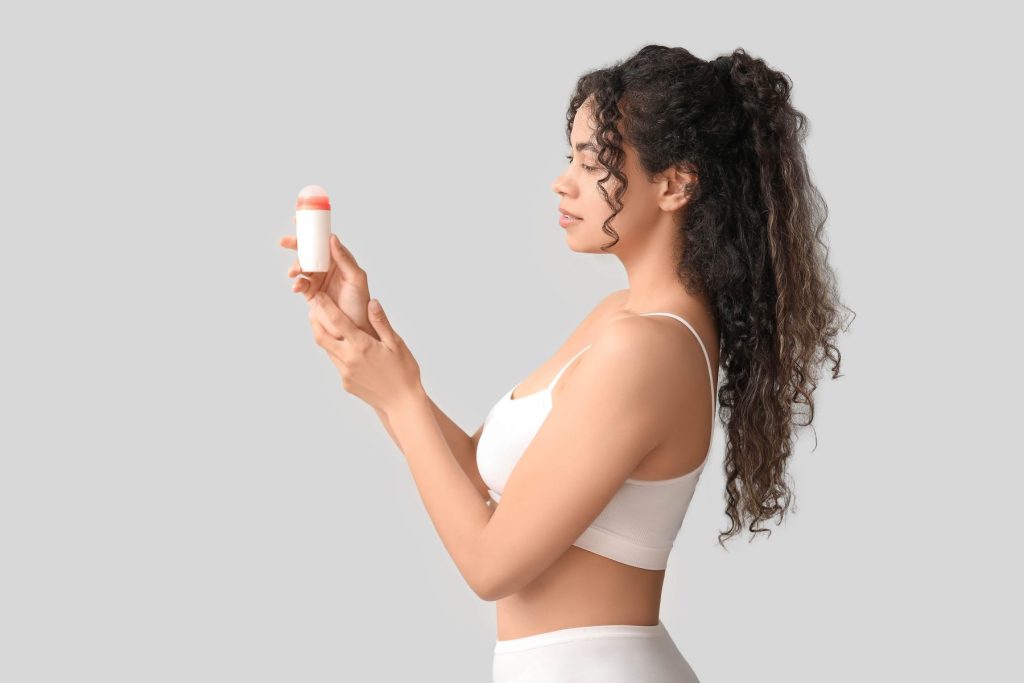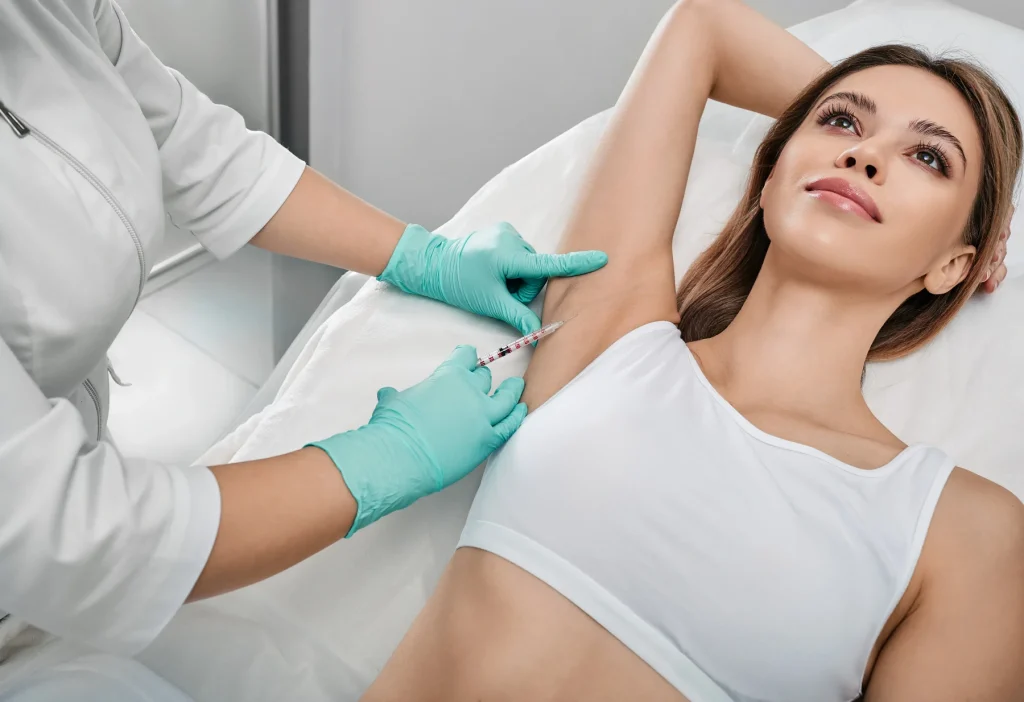Between 1 and 3 out of every 100 people in the UK suffer from a condition called hyperhidrosis or excessive sweating. That’s hundreds of thousands of people, including some you may know. With summer coming up, the effects of hyperhidrosis are about to get even worse.
But don’t worry, at Crystalline Clinic we can put a semi-permanent stop to this and allow everyone to enjoy this wonderful season.
Stick around to learn what hyperhidrosis is and how one of our treatments can put a stop to it almost entirely.
Understanding Hyperhidrosis
Hyperhidrosis is a condition where a person suffers from excessive sweating. This condition may affect one or more areas. The most commonly affected areas of hyperhidrosis include:
- Armpits
- Palms of your hands
- Soles of your feet
- Face
- Chest
- Groin
There are no concrete guidelines or ways to determine what separates “normal” and “abnormal” sweating. However, if your sweating is so excessive that it interferes with your daily life, you may have hyperhidrosis.
There are two types of hyperhidrosis, primary and secondary hyperhidrosis.
Primary hyperhidrosis
Primary hyperhidrosis is thought to be inherited and is caused by a problem in the part of your nervous system responsible for sweating. Primary hyperhidrosis begins in childhood and further develops during puberty.
Secondary hyperhidrosis
Secondary hyperhidrosis is usually a result of another condition or behavior. These include but are not limited to:
- Obesity
- Anxiety
- Chronic alcoholism
- Gout
- Certain Medications
- Pregnancy
- Menopause
- Diabetes
- Neurologic syndromes
- Thyroid problems
Symptoms of Hyperhidrosis

Common symptoms of hyperhidrosis include excessive sweating in the affected area. Some patients may also experience severe flushing (reddening) on their faces.
Over time, if your condition worsens, hyperhidrosis can cause:
- Itching and inflammation in the affected area
- Body odor
- Cracked or peeling skin in the affected area
Hyperhidrosis may also severely impact a person’s mental health and emotional well-being. Many people suffering from hyperhidrosis feel embarrassed and therefore avoid being around other people.
Diagnosis of Hyperhidrosis
Hyperhidrosis is diagnosed via a physical examination and listening to a person’s symptoms and medical history.
A physical examination often includes:
- Starch-iodine test – An iodine solution is applied to the affected area with starch sprinkled on top. If excess sweating is detected, the solution will turn dark blue.
- Blood test – A blood test will provide more information about the causes of your symptoms.
Treatment Options for Hyperhidrosis

There are also things you can do to reduce Hyperhidrosis. To reduce it at home, you can try some of the following:
- Strong antiperspirants/deodorants
- Showering/bathing more often
- Wearing looser/lighter clothes
- Avoid trigger behaviors such as alcohol
However, at Crystalline Clinic we can semi-permanently stop your hyperhidrosis through our Botulinum toxin (Botox) injections. Administering Botox injections into an overactive nerve will block it from triggering the sweat gland in that area.
Each area affected will require several injections. For the treatment to remain effective, injections should be re-administered every six months. It may take a few days to see results. Muscle weakness in the affected area may also occur as a side effect.
Hyperhidrosis can be a challenging condition to deal with in your daily life, affecting not just your physical comfort but also your mental well-being. While there are various methods you can try, Botox injections have been proven to be both effective and long lasting. At Crystalline Clinic our expert team of medical professionals specialize in Botox treatments for hyperhidrosis helping you stay dry and confident.
If you, or someone you may know, are tired of dealing with excessive sweating contact us today and take the first step towards a sweat-free life with our expert Botox treatment.
Stay fabulous
Crystalline Clinic Team
